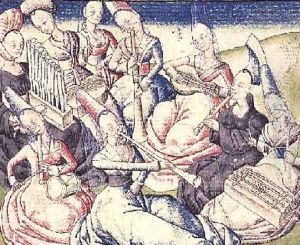Martin Le Franc Paintings
Martin Le Franc, born around 1410 and deceased in 1461, was a notable figure not as an artist in the traditional sense of painting or sculpture, but as a poet and a significant contributor to the literary and cultural landscape of the 15th century. His contributions, however, intersect with the art world through his commentary on and involvement with the artistic figures of his time, making him an interesting subject of study in the context of art history.
Le Franc was born in the Duchy of Savoy, an independent state that played a crucial role in European politics during the medieval period, serving as a bridge between the Italian peninsula, France, and Switzerland. This geographical and political context provided Le Franc with a unique vantage point on the cultural and artistic movements of his time. He served in various clerical and administrative roles throughout his life, including positions at the courts of Antipope Felix V and Philip the Good, Duke of Burgundy. His roles in these courts put him in direct contact with the intellectual and artistic circles that were driving the Renaissance in Northern Europe.
His most famous work, 'Le Champion des Dames' (The Champion of Ladies), is a vast allegorical poem defending women against misogynistic accusations, a topic that was quite progressive for its time. Composed around 1440, this work is notable not only for its literary qualities but also for its references to contemporary artists, including Jan van Eyck and Rogier van der Weyden, among others. Through his writings, Le Franc provides valuable insights into the perceptions and receptions of artists and their work during his lifetime.
Le Franc’s engagement with the art world and his writings offer a unique perspective on the interconnectedness of art, literature, and culture in the 15th century. His observations and commentaries on artists contribute to our understanding of the social and cultural context in which these artists worked, making him an important figure for historians studying the period. Despite not being an artist himself, Martin Le Franc's legacy is intertwined with the history of art, reflecting the broad and inclusive nature of cultural and artistic movements during the Renaissance era.
